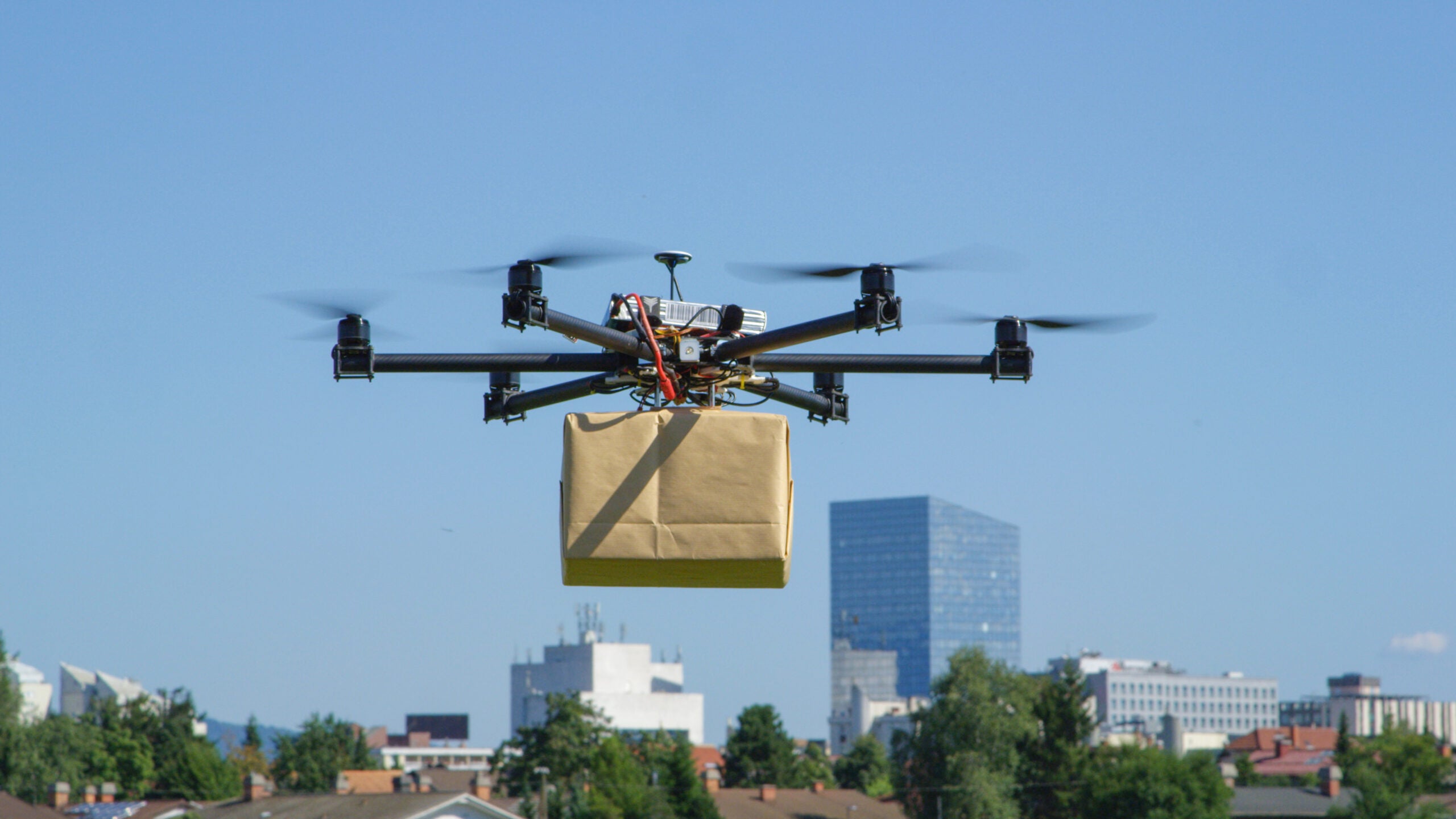
Drone deliveries are inching closer to becoming a reality after the UK government unveiled plans to build a 164-mile automated superhighway by mid-2024.
The Skyway project will connect the airspace between Cambridge, Oxford, Rugby, Milton Keynes and Coventry. Similar projects include delivering mail to Isles of Scilly and mediation and treatments across Scotland.

Access deeper industry intelligence
Experience unmatched clarity with a single platform that combines unique data, AI, and human expertise.
This project has been formed by a consortium led by tech companies including Reading based Altitude Angel, BT and tech startups, who will create the superhighway.
BT’s director of drones, Dave Pankhurst said the social and economic potential of the Skyway project drones is immense. It will require close collaborations in the industry to create drone opportunities safety.
“It’s an exciting time to be part of such a powerful consortium,” Pankhurst said. “Project Skyway will be crucial to showcase how the UK can not only lead the creation of new jobs and public services but form the backbone of how we integrate drones into our daily lives.
“Cellular connectivity and a secure, resilient 4G and 5G mobile network, will continue to enable the rapid growth of the drone market. Through our EE network, BT is providing the UK’s largest and most reliable network to Project Skyway, to keep drones connected to ARROW so they can receive greater situational awareness and tactical collision avoidance instructions from the autopilot system, and stream key video feeds such as search and rescue footage back to control rooms.”

US Tariffs are shifting - will you react or anticipate?
Don’t let policy changes catch you off guard. Stay proactive with real-time data and expert analysis.
By GlobalDataSkyway project partners will collaborate to produce ground-based sensor and networked DAA solution technology for the superhighway drones. This will be linked up to Altitude Angel’s global UTM system, stitching data from sources in real time to locate drones in the airspace. It will also let drones’ interface to centrally direct overhead traffic and increase the payload, efficiency and range of the drones.
The drones’ data will be analysed through traffic management systems, which acts as air traffic control. It will guide the drones along routes and avoid any collisions.
The UK drone superhighway part of a bigger package
This £12m drone superhighway package is part of a £273m funding package for the aerospace sector. Business secretary Kwasi Kwarteng unveiled it this week at the Farnborough International Airshow.
It also includes £155m of joint government-industry funding for new projects in green aerospace innovation such as hydrogen and battery tech. A further £105m of the funding will be shared by projects, which focus on air transport system and vehicle tech development for the government’s future flight challenge.
“Today’s package of support will further this recovery and help the sector seize on the enormous opportunities for growth that exist as the world transitions to cleaner forms of flight,” said business secretary Kwasi Kwarteng in a statement.
“Through funding for the latest in green technology, such as solar and hydrogen powered aircraft, and setting out our vision for the fast-growing market for commercial drones, we are once again placing the aerospace sector directly at the centre of our plans to deliver jobs and grow the economy.”
The projects will be used to manufacture unmanned autonomous drones. Drones will help to survey hazards, deliver post, mediation and treatments, and to improve motorway safety and journey times.
In a Drone Ambition Statement, the government outlined how they can work in the industry. This will allow them to seize their potential, predicting that drones will contribute £45bn to the UK economy with over 900,000 drones in the skies by 2030. Carbon emissions reduced by 2.4 million tons, £22bn in net cost savings and 650,000 jobs created.
Drones are nothing new
This possibility of using drones for surveillance and delivery has been around for a long time. Alphabet, the parent company of Google, offers drone delivery via its subsidiary Wing in Australia. Wing announced it had made its 200,000th delivery in March.
However, these types of projects have been held back by security concerns and often limited to specific areas.
Amazon pointed towards a future in drone delivery back in 2014. It is only recently that Lockeford, California was announced as the first and only location so far for an Amazon drone delivery.
Insiders have told WIRED that an early drone project at Amazon was “collapsing inwards” and that it was “dysfunctional” and resembled “organised chaos” run by managers that were “detached from reality” in the years building up to the mass redundancies.” The company had struggled to get approved regulation in the US.
When it comes to regulations in the UK, drones are covered by Unmanned Aircraft Systems Regulations. You must be registered, not endanger anyone with your drone and always have it in your sight. The government wants regulation to provide public confidence in aviation markets and provide robust regulatory frameworks to allow for open and equitable access to airspaces.
The government has been working with the Civilian Aviation Authority (CAA), to ensure safety and develop and build on regulatory frameworks. The CAA were given £2.6m in funding for future flight projects and to develop this framework for drones for various uses including commercial.
GlobalData is the parent company of Verdict and its sister publications.







